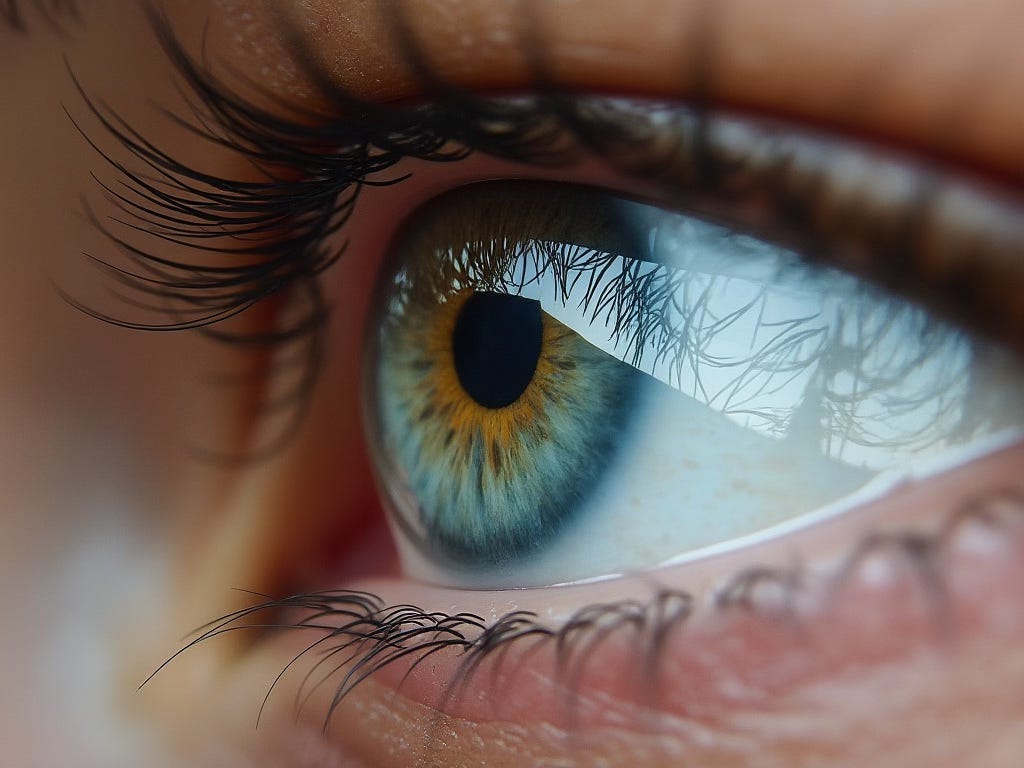Tears, idle tears, I know not what they mean,
Tears from the depth of some divine despair
Rise in the heart, and gather to the eyes,
In looking on the happy autumn-fields,
And thinking of the days that are no more.Alfred Tennyson, from the poem Tears, Idle Tears
I was telling a friend that I had not cried as much as I did during the last 10 months in my entire life (before November 2023). I think these tears spill out with intense emotions even today if I think of a specific person.
Though I am not able to fully articulate the reason for these tears, I am sure they have great value.
These tears signify that I was able to love someone and bear the grief of loss. It signifies that my heart has not come to terms with the loss even though the self-regulating part of the brain has dissociated from this feeling altogether.
The Biological works
General curiosity and the desire to understand, touch and feel these emotions often leads me into strange rabbit holes. Today I tried to understand the nature of tears from a biological perspective, i.e. the nature of hormones and organs involved.
I resorted to a couple of prompts on ChatGPT to find out more about tears. Apparently there are different types of tears.
Basal Tears: These are constantly produced to keep the eye moist, lubricated, and protected.
Reflex Tears: These are produced in response to irritants like smoke, dust, onions, or foreign particles.
Emotional Tears: These are unique to humans and are triggered by strong emotions like sadness, joy, or stress.
It’s strange that emotional tears have the same mechanism working behind no matter what kind of emotion you feel. The emotion in question can be joy or sorrow.
Here’s a breakdown of how emotional tears work:
Emotional Trigger: When you experience a strong emotion, whether sadness, happiness, or stress, the limbic system (the brain’s emotional center) becomes activated. A key structure here is the amygdala, which processes emotions and sends signals to other parts of the brain.
Signal to the Hypothalamus: The amygdala communicates with the hypothalamus, which is responsible for regulating autonomic functions like heart rate, body temperature, and emotional responses. When emotional distress occurs, the hypothalamus sends signals to the parasympathetic nervous system, which triggers a physical response to the emotion.
Tear Gland Activation: The signals from the hypothalamus are transmitted to the lacrimal glands (tear glands) via the facial nerve (cranial nerve VII). This activation stimulates the lacrimal glands to produce tears.
Hormonal Release: Along with the neurological signals, emotional arousal can cause the release of stress hormones like adrenocorticotropic hormone (ACTH) and prolactin. These hormones are thought to play a role in the production of emotional tears, differentiating them from other types of tears.
Tear Composition: Emotional tears are chemically different from basal (which keep the eye lubricated) or reflex tears (triggered by irritants like onions). Emotional tears contain:
Leucine enkephalin: A natural painkiller that helps reduce emotional stress.
Higher levels of cortisol, the stress hormone, which is thought to help remove some of the emotional stress physically.
Adrenocorticotropic hormone (ACTH), linked to stress response.
Cleansing and Relief: Shedding emotional tears may provide some physiological benefits by flushing out stress-related chemicals. After crying, people often report feeling calmer or relieved. This may be because tears help reduce the intensity of emotional distress by releasing hormones and other compounds associated with stress.
Psychological and Social Factors: Emotional tears also serve a social function. Crying in front of others can elicit empathy and support, strengthening social bonds. This evolutionary function might have developed as a way for humans to communicate vulnerability and seek help in times of emotional need.
In summary, emotional tears are the result of a complex interplay between the brain's emotional centers, nervous system signals, and hormonal changes, with possible benefits that include stress relief and emotional regulation.
More Detours
Not surprisingly, I am not the first guy to think about tears. There’s a 2800 word essay about tears on Aeon Magazine. Of course, the writer has probably done months of research on this topic. I’m just noting some interesting remarks or quotes from it over here.
There is a traditional Yiddish phrase for crying that translates literally as ‘pissing from the eyes’.
American Biochemist William H Frey claimed that crying is ‘an exocrine process’. According to him it is ‘like exhaling, urinating, defecating and sweating’. It releases toxic substances from the body i.e. ‘stress hormones’.
One theory describes adult crying as a “return to infantile, even prenatal, experiences and emotions.”
‘There are no tears of joy, only tears of sadness.’ - Sandor Feldman, an analyst who claims that crying at the podium of Olympics is only a cases of ‘delayed or displaced discharge of negative affect’.
All research in the area of ‘tears’ or ‘crying’ have not lead to any significant or widely accepted theory.
Death of Dreams
I would like to end this random collection of thoughts with Tennyson’s verses.
Dear as remembered kisses after death,
And sweet as those by hopeless fancy feigned
On lips that are for others; deep as love,
Deep as first love, and wild with all regret;
O Death in Life, the days that are no more!
In reality, tears are just an obituary to days that are no more. It’s literally the death of days that you had anticipated with so much hope and desire.


